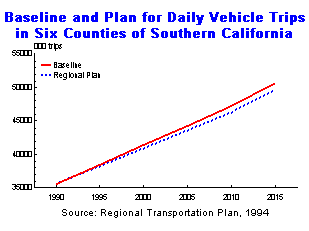
Comments or questions? Email to Niles@globaltelematics.com or call 1-206-781-4475
This seminar, was part of an MIT course Making Places Through Information Technology. Another part of the seminar not described here was presented by Professor Qing Shen.


Telecommunications is even more complex than it seems.

Transportation specialists are tempted to make analogies between telecom and transport, even in some cases calling telecom a "mode of transportation."

But telecom and transport are fundamentally different.

For people, transportation provides proximity, and telecom provides remote interaction. There are many points of difference.

See Niles' essay Telecommunications' Big Idea for an elaboration of these points of difference.

Don't let anybody kid you -- sometimes you've got to be there.

Turning now to transportation, it's not going away:

The following includes a rescaling calculation to patch over a 1992 shift in measurement methodology by the Federal Highway Administration:

Telecommuting -- working without commuting -- is an alternative to driving in peak congestion.

For more check out this review paper we prepared for Hudson Institute on telecommuting, "Optimizing Telework, Flextime, and Officing."

As an example of what is possible through telecommuting, the following numbers were reported from a 1996 survey by the Washington (DC) Council of Governments:

But the following is the bottom line impact of telecommuting on travel nationwide as determined by the U.S. Department of Transportation in the early 1990s. There is no recent evidence that would revise this conclusion.

Telecommuting is a small part of telework, which is all of the ways that telecommunications affects the location of workers. Teleservice is all of the ways that telecommunications affects the location of customers. For more, see the study Beyond Telecommuting that we did for U.S. Department of Energy and Lawrence Berkeley Laboratory.

Online shopping falls under the teleservice category. Shopping is the most important single travel purpose after commuting to work.

Stores and malls are fighting back against online shopping with bigger, more specialized stores where shoppers can touch the merchandise and take it home for a low price. Modern stores are all powered by advanced telecommunications for inventory control and quick checkouts.

So the impacts of telecom on travel are many:

A factoring of how telecom does provide for trip substitution:

ITS in the following summary list of land use issues means Intelligent Transportation Systems, meaning the application of telecommunications and computers to motor vehicle travel. Examples include freeway ramp metering that smooths out traffic flow, Internet web sites that display traffic conditions in real time, and electronic signs that direct drivers to available parking spaces.

Following is a good example of how new road capacity in growing urban areas becomes filled with new travelers. Taking telecommuters and teleshoppers off the road makes room for people who would travel if the roads were not so crowded

Another issue with telecommuting -- most people on the road are not commuting, or at least not commuting without other stops.

Trips are complex. The following shows how frequently people are making at least two stops on a trip that ends at their home.

Telecommunications, along with transportation improvement and other factors, supports population growth on the fringe of metropolitan areas. Here is an illustration of what is happening in western Washington State as Seattle-Tacoma spreads out to become a megalopolis:

Hypothesis: Telecommuters like bigger houses, so they have room for a nice home office.

Following is the typical problem faced by government-chartered Metropolitan Planning Organizations (MPOs) in every large U.S. metropolitan area: steady growth of travel volume, and very little impact from the official transportation plan that makes road and public transit improvements. Progressive MPOs are studying telecommunications as a key influence on travel in the 21st century.

Travel has many characteristics, and telecom influences all of them.

Global Telematics and partners have developed a strategy for metropolitan area planners to gain travel savings from telecommunications. The key is focusing on applications that replace trips that people don't like to make, like going to the Registry of Motor Vehicles. For more, see the Telecommunications Strategy for Southern California Association of Governments.

The following is an expansion of a model first proposed by travel behavior researcher Ilan Salomon. As society matures, all forms of communications and travel are expanding, even while some purposes (traveling to the blacksmith) and forms (telegraphs and canal boats) decline or disappear. This graphic is from Beyond Telecommuting.


Note: The above includes excerpts from a decade of work by Global Telematics. For the development of ideas integrated above, Global Telematics appreciates research funding support from U.S. Department of Energy, Lawrence Berkeley Laboratory at University of California, Hudson Institute, Integrated Transport Research, Southern California Association of Governments, Ellen Williams & Associates, Technology Futures, State of Idaho, Puget Sound Regional Council, Center for the New West, and Mineta Transportation Institute at San Jose State University. None of the ideas presented above, however, are meant to represent conclusions or policies of these organizations.
Home |
Divisions |
Clients |
Services |
Research |
Niles |
Affiliates |
Experience |
Last modified, February 07, 2011 |
|||||||